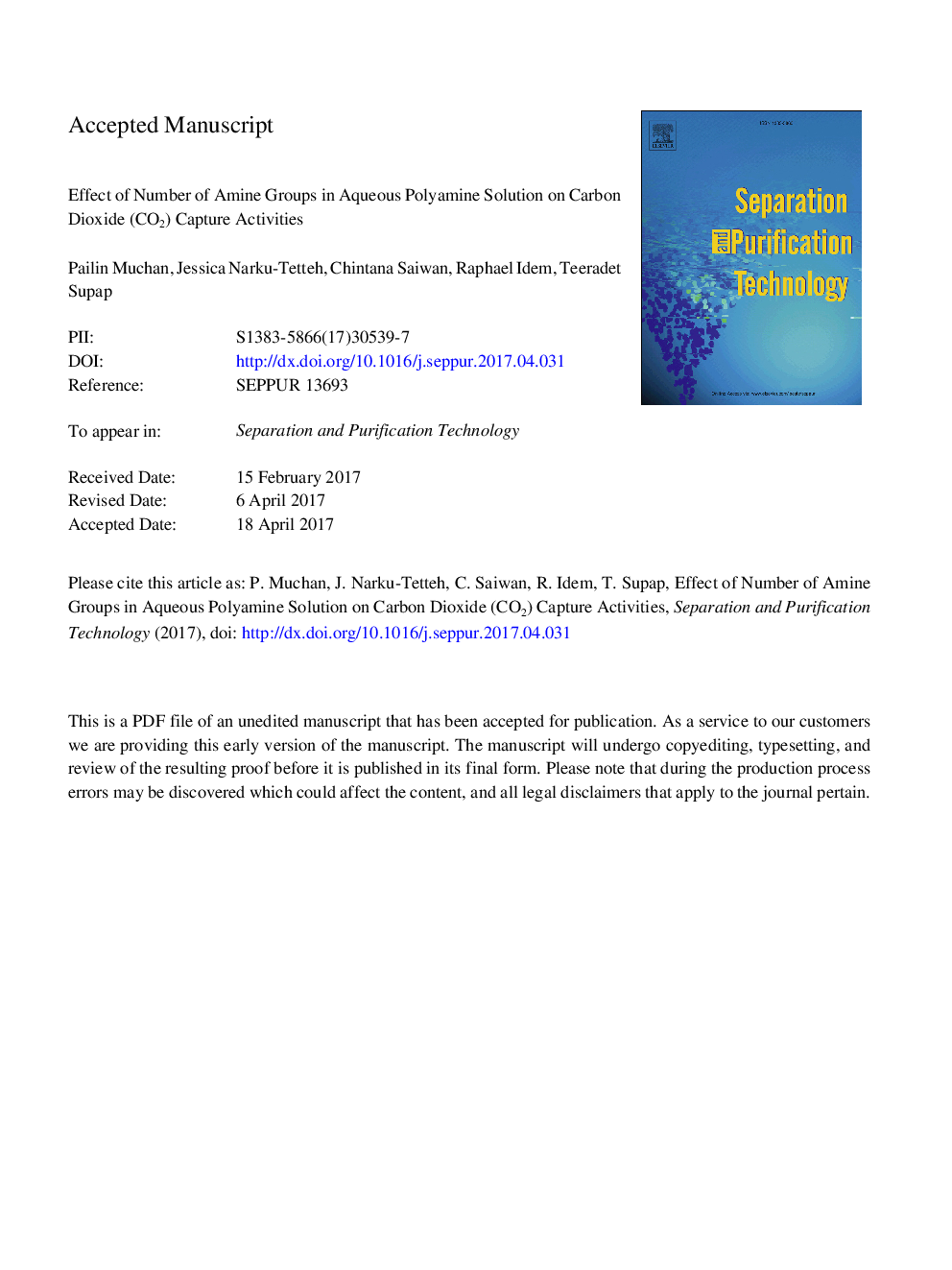| Article ID | Journal | Published Year | Pages | File Type |
|---|---|---|---|---|
| 4989741 | Separation and Purification Technology | 2017 | 27 Pages |
Abstract
The absorption and desorption of aqueous polyamine solutions with different number of amine groups (ethylenediamine (EDA), diethylenetriamine (DETA), triethylenetetramine (TETA), and tetraethylenepentamine (TEPA)) were determined for their equilibrium CO2 loading, initial absorption and desorption rates, heat duty for solvent regeneration, heat of CO2 absorption and pKa. The absorption was carried out at 313Â K using 15% CO2 in N2 balance while desorption was performed at 363Â K. The results showed that the equilibrium CO2 loading and the initial absorption rate were increased with increasing the number of amine groups because of the increase in the amine reactive sites for CO2 to form various species such as carbamate and dicarbamate at the equilibrium condition. The regeneration efficiency also increased with increasing number of amine groups because these caused an increase in the initial desorption rate and the decrease of heat duty. TEPA solution (2Â mol/L) showed the best performance for all CO2 capture activities which are 2.12Â molCO2/mol amine for the equilibrium CO2 loading, 0.74Â ÃÂ 10â2Â molCO2/min for the initial absorption rate, 4.14Â ÃÂ 10â2Â molCO2/min for the initial desorption rate, 41.13Â kJ/mol for heat duty for solvent regeneration, and â70.18Â kJ/mol for heat of absorption.
Related Topics
Physical Sciences and Engineering
Chemical Engineering
Filtration and Separation
Authors
Pailin Muchan, Jessica Narku-Tetteh, Chintana Saiwan, Raphael Idem, Teeradet Supap,
